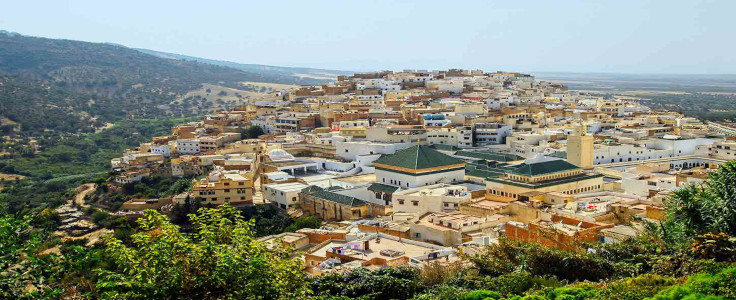
The city of Meknes was the first major work of the Alawite dynasty.and today it is considered an exemplary testimony of the fortified imperial cities of Morocco . surrounded by imposing walls, 40 kilometers long and with Bastions reaching 15 meters in height. Inlaid with 9 monumental gates,where inside you can take beautiful walks among stupendous Hispano-Moorish style buildings dating back to the 1600s. The urban fabric of Meknes is unique and consists , of a beautiful Kasbah,and 25 mosques. and 10 Turkish baths and numerous granaries and palaces.
What to see in Meknes?
BAB MANSOUR
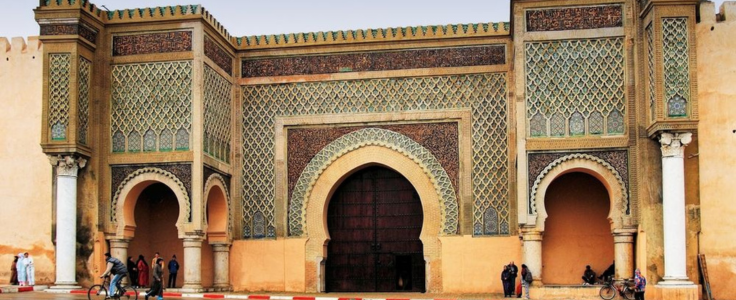
La porta BAB MANSOUR si trova nella parte sud orientale di piazza el hedim, vicino alla residenza del sultano, ed è il fulcro del complesso della città imperiale. Si tratta di un grandioso ingresso alla città, la più maestra delle porte imperiali del Marocco, e richiama immediatamente il fascino e lo splendore delle creazioni di MOULAY ISMAIL fondatore della dinastia alawita . Questo ingresso completato nel 1732, è stato progettato da un Cristiano convertito all'Islam, qui il sua nome, la porta di MANSOUR, cioè il vincitore Numerose iscrizioni sono ancora oggi visibili e il zellij, seppur un po' sbiadito è ancora bellissimo , e Le colonne di marmo che ornano i Bastioni Laterali provengono dalle rovine di volubilis la citta romana a 40 kilomere de maknes . La Città ed i resti del palazzo reale di Meknes fanno parte dei monumenti patrimonio mondiale dell'UNESCO e un giro dei suoi Bastioni rivela tutta la bellezza di questo sito. Accanto a bab MANSOUR vi è una porta più piccola, con lo stesso stile bab mansour si chiama bab JEMAA el NOUAR .
MOULAY ISMAIL MAUSOLEUM
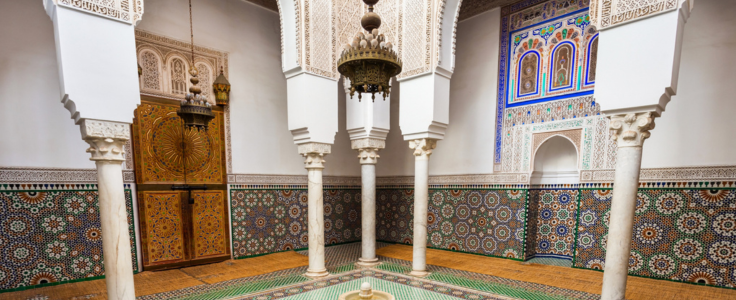
The mausoleum of moulay ismail in Meknes, located in the old city on the opposite side of el hedim square, is the last resting place of one of Morocco's most famous sultans and is one of 3 Moroccan shrines,along with the tomb of MOHAMMED V and the BOU INANIA Madrasa in Fes. They can also be visited by non-Muslims. The last resting place of the sultan, remembered for driving the Spanish and British out of Morocco, uniting the country and establishing the Alawite dynasty, is a shrine consisting of a series of elegant and peaceful courtyard,rooms decorated with zellij tiles and elaborate stucco, and adorned with 4 fine clocks donated by King Louis 14 of France you can enter the mausoleum through the imposing entrance BAB MANSOUR , THE MAUSOLEUM IS OPULENT and displays the best of Moroccan craftsmanship it is said that Moulay ismail was buried here along with one of his five hundred wife and two of his eight hundred children. Modest dress is required for entry for both men and women, and non-Muslims are not allowed near the tomb proper.
MADRASA BOU INANIA
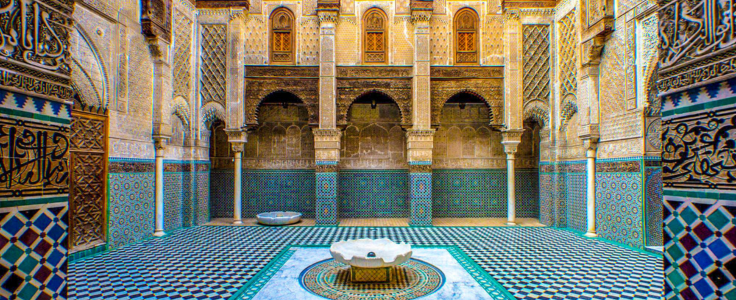
The BOU inania medersa is a school built in the 14th century during the reign of the Merinids,finished by Buo inan one of the famous sultans and powerful of the Merinid dynasty in 1358. The medersa not to be confused with the medersa de Fez of the same name,the structure is located de front of the great mosque of Meknes,and has an exquisite courtyard richly decorated with tiles,stucco,carved olive wood and cedar ceiling. On either side of the courtyard inside are cells where the younger students lived while the older students and teacher on the first floor. Considered by many to be the BEST MERINID MONUMENT that has come down to us,the medersa is a true marvel of Islamic architecture. The medersa is not accessible to non-Muslims but can be admired from the buildings that surround it.On its roof is a terrace from which to admire the best view of the old city.The monument contains a prayer room,a place for ablutions,and classrooms with a large patio.
HERI ES-SOUANI
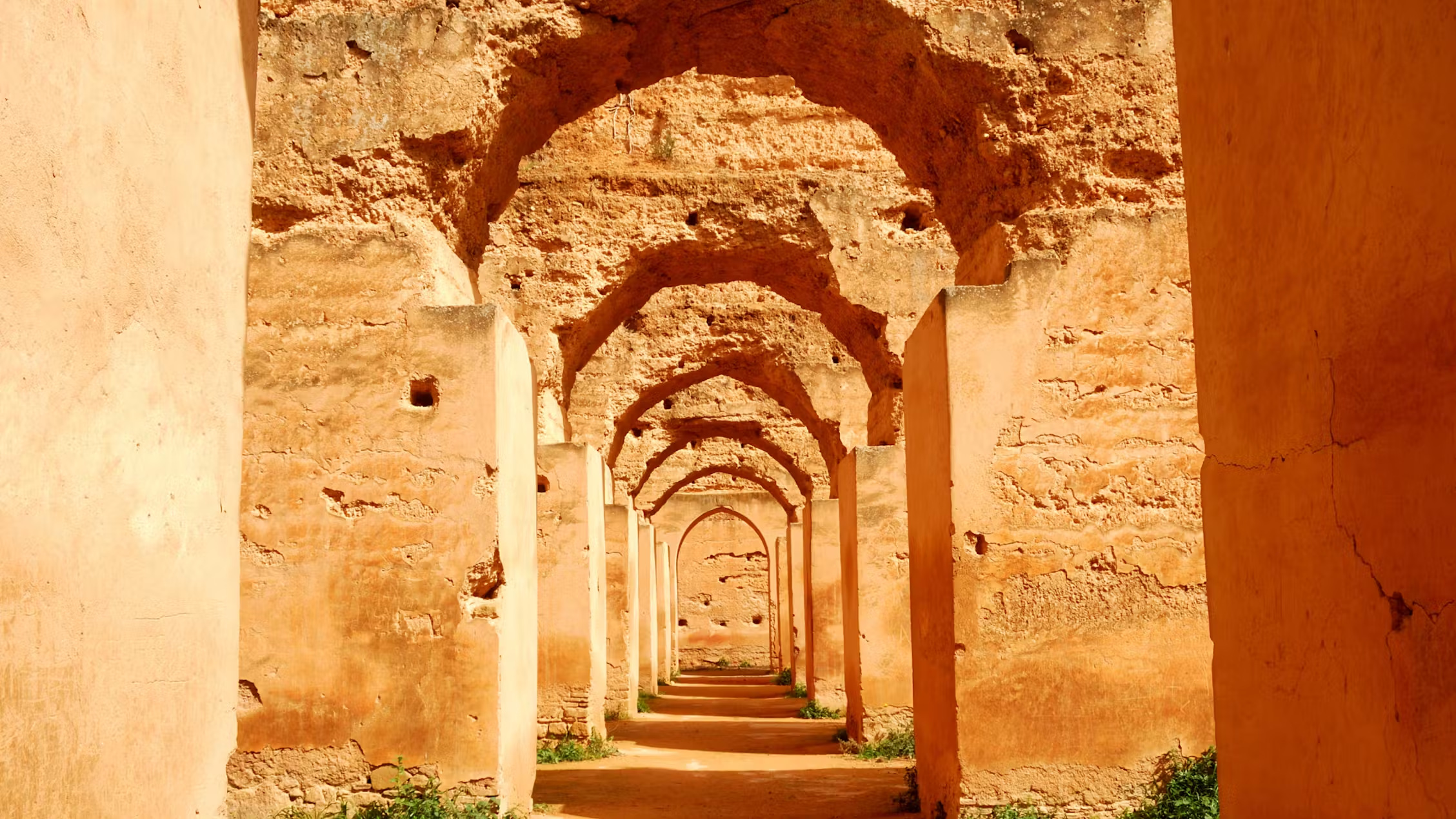
Thirty minutes' walk from the Bab Mansour gate is the huge high-vaulted complex of Heri ES-Souani,also known as Dar el ma,a collection of warehouses,stables,granaries,storerooms and barns used by Sultan Moulay Ismail to store living in case of drought or siege. Several WELLS AND A SYSTEM OF WATER CHANNELS on the floor, designed to keep the temperature low and circulate air within the complex ,were built between each room and today are a magnificent example of Moroccan engineering in the 14th century the complex is characterized by tiny windows and massive walls 3 meters thick. inside Each room there is a well fed by water wheels and inside the complex found shelter 12 thousand horses where they are herded in this complex to which tempe by the sultan ready for war during the unifications of the cities of morocco or against the rebel tribes .in the roof terrace of this structure you can admire a beautiful view of the city of Meknes and the Agdal Souani basin which is right next to it and covers 4 hectares.
Films: THE LAST TENDENCY OF CHRIST and JESUS OF NAZARET used Heri es-Souani as the setting.